Summary
- The Bank of England voted to hold rates at their current level of 4.25% today, mirroring the decision made by the US Federal Reserve yesterday.
- The decision was expected. Markets and economists had all but ruled out a cut, as mixed signals in the global economy meant a wait-and-see approach looked more likely.
- The Bank has stuck to a quarterly pace of cuts so far. The last reduction came last month in May.
- Inflation remains high, with the headline figure coming in at 3.4% in May's report, published yesterday.
- The conflict between Israel and Iran has also pushed oil prices up in recent days, which could put upward pressure on energy prices and inflation going forward.
| When will interest rates fall further? | Inflation latest | MPC meeting dates |
Good afternoon and welcome to our live report. The Bank of England will announce its next interest rate decision at midday tomorrow.
Temperatures might be heating up across the UK, but interest rates are likely to be kept on ice. Markets and economists are confident that the Monetary Policy Committee (MPC) will hold rates at 4.25% tomorrow. Stick with us for all the details, including preview analysis today and live reporting tomorrow.
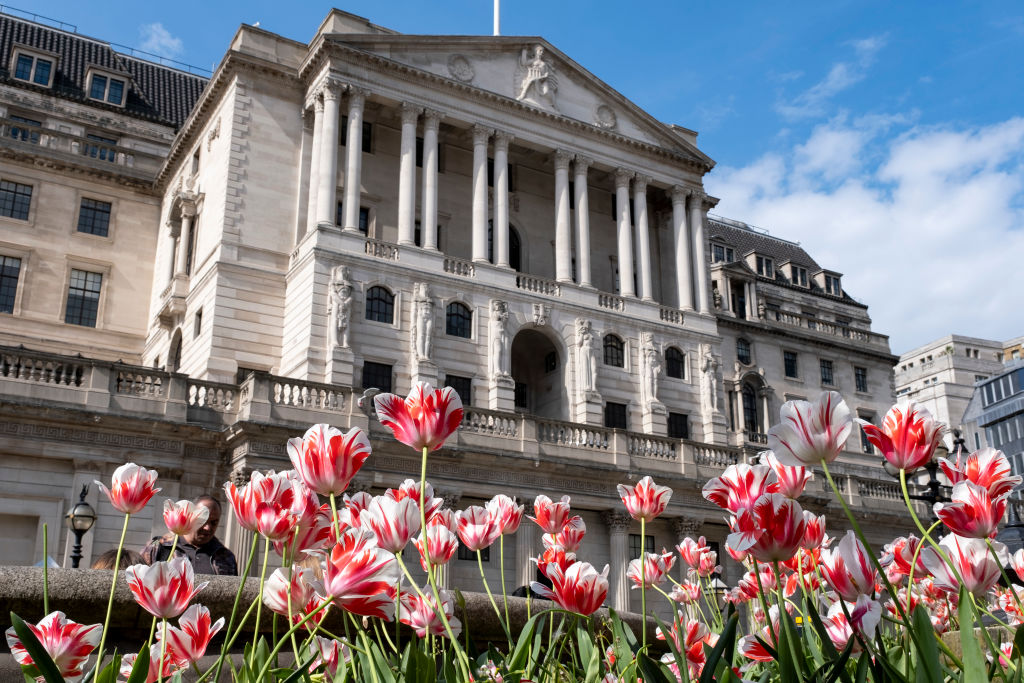
Inflation still coming in hot
The Office for National Statistics (ONS) published May’s inflation report this morning. Prices rose by 3.4% on an annual basis.
This was down from April’s official reading of 3.5%, but this figure was artificially inflated by a car tax blunder from the Department for Transport, meaning it should have been 3.4%. The ONS decided not to revise April’s report, in line with its usual policy.
A reading of 3.4% is still fairly hot. Remember that the Bank of England’s target is 2%.
Inflation briefly returned to target levels last year, before dropping below 2% in September 2024, but higher energy prices have largely been responsible for pushing it back up in the period since.
The Bank of England expects inflation to peak at around 3.7% in September this year before falling back, according to its latest monetary policy report.

“Gradual and careful” approach to interest rate cuts
In recent months, the Bank of England has repeatedly said that it plans to take a “gradual and careful” approach to monetary policy easing. Many have interpreted this as meaning a quarterly pace of rate cuts. This is the pattern we have seen so far:
- August 2024: The first cut this cycle brought rates from 5.25% to 5%.
- November 2024: Rates reduced from 5% to 4.75%.
- February 2025: Rates cut to 4.5%
- May 2025: Rates cut to 4.25%.
The Bank of England has been clear that it doesn’t have any set path in mind, and that it assesses the data on a meeting-by-meeting basis when making decisions.
Pace of rate cuts “now shrouded in a lot more uncertainty”
Speaking to MPs earlier this month, the Bank of England’s governor Andrew Bailey said that the pace and extent of cuts was “now shrouded in a lot more uncertainty” thanks to global trade disruption.
The Bank is currently of the opinion that Donald Trump’s tariffs will reduce global economic activity, lowering export prices and inflation – but Bailey added that this view is “open to interpretation”. If tariffs disrupt supply chains, for example, that could prove inflationary.
The recent escalation of tensions in the Middle East could add to the economic uncertainty, pushing oil prices (and therefore energy prices and inflation) up.
“While it’s unlikely to result in rate hikes, a sustained and/or permanent increase in oil prices could push inflation expectations higher (albeit temporarily). This could open the door to a slower removal of policy restriction going forward,” said Sanjay Raja, chief UK economist at Deutsche Bank.
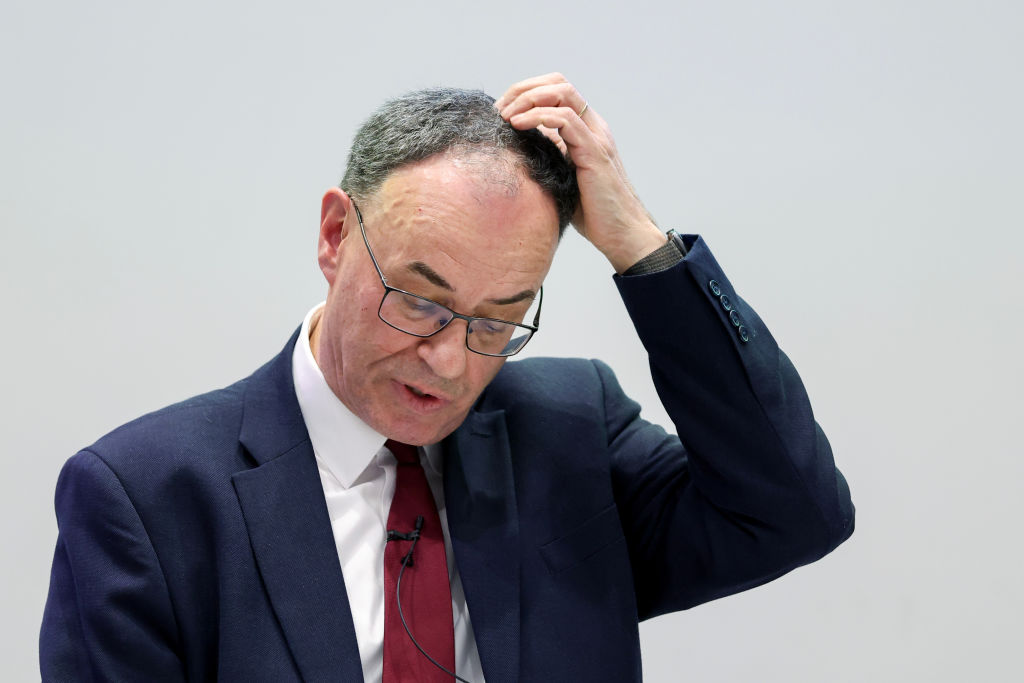
How many further rate cuts this year?
A “hold” decision is widely expected tomorrow, but how many interest rate cuts can we expect later this year? Experts are divided.
- Research provider Pantheon Macroeconomics expects just one more cut this year, potentially coming in August. It previously thought November, but has brought this date forward after the labour market showed signs of weakening in the latest ONS report. This would bring the base rate to 4%.
- Financial institution ING is expecting quarterly cuts, which would mean two more cuts this year. Its economists think they will come in August and November. This would bring the base rate to 3.75%.
- Deutsche Bank thinks we will see three more cuts, coming in August, November and December. Its economists think weaker pay data could allow the MPC to speed up the pace of rate cuts in the final quarter of the year. This would bring the base rate to 3.5%.
“A smorgasbord of mixed messages”
As well as maintaining price stability, the Bank of England is responsible for supporting growth and employment. This is a tricky tightrope to walk. Bringing inflation under control means keeping interest rates high – but if you do this for too long, households and businesses feel the pinch.
Economists often talk about achieving a “soft landing”. This is when inflation and growth slow without dipping into recession. Timing interest rate cuts perfectly can help achieve this, but it is no easy feat.
Laith Khalaf, head of investment analysis at platform AJ Bell, said the Bank of England currently has “a smorgasbord of mixed messages” to distil. Inflation remains high, tariffs are causing trade disruption, oil prices have spiked as a result of tensions in the Middle East, and growth slumped in April, with GDP dropping 0.3% on a monthly basis.
“Little wonder that at the last meeting of the Monetary Policy Committee (MPC), the committee was split in terms of the direction of monetary policy. Markets are currently pricing in only a 10% chance of a rate cut, with the consensus landing on a rate cut in August or September, and then another one by year end,” he said.

What does it all mean for Rachel Reeves?
The Bank of England sets interest rates independently from the government. This means the chancellor, Rachel Reeves, is not allowed to get involved. That won’t stop her from hoping for further rate cuts though – and sooner rather than later.
When interest rates are high, it is more expensive for the government to borrow money. High borrowing costs and weak economic growth erode the chancellor’s fiscal headroom, otherwise known as the amount of leeway Reeves has to increase spending or cut taxes.
As Paul Johnson, director of the Institute for Fiscal Studies (IFS), has pointed out, Reeves’s fiscal rules are currently being met by a “gnat’s whisker”. If gilt yields rise any further or growth expectations weaken, further tax hikes or spending cuts will be necessary.
Although the base rate isn’t expected to rise at any point in the near future, gilt yields (which represent the cost of government borrowing) could go up if markets start pricing in a “higher for longer” inflation scenario and slower base rate cuts.
This could create a headache for Reeves in the lead-up to the 2025 Autumn Budget.
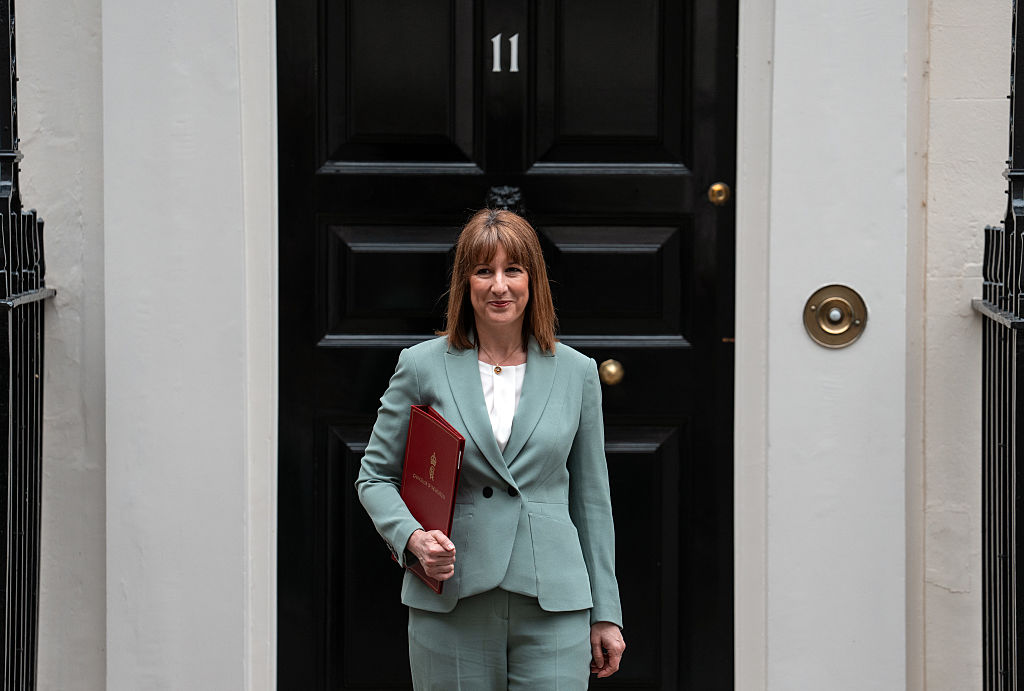
Would an interest rate “hold” be good news for savers?
Unlike those with debts, savers may be pleased to hear interest rates are expected to hold steady tomorrow. Savings rates have fallen over the past year or so, first in anticipation of base rate cuts and then in response to them.
That said, part of the reason the Bank of England is expected to hold interest rates at their current level is that inflation is proving persistent – and inflation is a saver’s worst nightmare. Savers may now be feeling the pinch.
“Savers continue to be hit by the handful of base rate cuts over the past year as all the top rates for non-ISAs have dropped compared to the market leaders in June 2024,” said Caitlyn Eastell, spokesperson at comparison site Moneyfacts. “Those consumers with a variable-rate account or who have only fixed for a year may now be feeling the pressure.”
Make sure you shop around for the best deal when choosing a savings account or cash ISA. See our round-up of the best easy-access rates, one-year savings accounts, regular saver accounts and cash ISAs for the latest deals on cash savings.

What about prospective homeowners shopping for a mortgage?
Prospective homeowners and those looking to remortgage may be disappointed to hear rates are likely to remain on hold tomorrow. However, it is worth pointing out that fixed-rate mortgage deals are priced based on a range of factors, including swap rates. This means they don’t always move in tandem with the base rate.
David Hollingworth, associate director at L&C Mortgages, said mortgage rates have been hard to call in recent weeks. “After a period of fixed rate increases, there’s now a more mixed [picture] with some lenders cutting deals again slightly, as markets find their level,” he said this morning.
“Overall, it looks as though fixed rates may bobble up and down without any significant trend or shift either way. That said there’s clearly a great deal of uncertainty as global events unfold. Borrowers would be better to focus on getting the best available rates and keeping them under review, rather than second guessing the next move in interest rates.”
Remember: if you have a fixed-rate mortgage and are in the middle of your deal, you won’t see any change in your repayments until the fixed period ends, no matter what happens with interest rates tomorrow. The changes we have highlighted here refer to new deals currently available on the market.
Across the pond: will the Fed cut US rates today?
The US Federal Reserve (Fed) is also meeting to discuss interest rates this week. It will announce its decision at 2pm ET today, which is 7pm UK time. The Fed is widely expected to hold rates at their current range of 4.25-4.5%.
Research provider Pantheon Macroeconomics agrees that the Fed will play for time.
“The economy is slowing gradually for now, so policymakers will conclude they can wait for more information on the size, speed and breadth of the uplift to consumer prices from the current tariffs, as well on whether extra tariffs will be imposed this summer,” said Samuel Tombs, Pantheon’s chief US economist.
A hold decision will prove unpopular with US president Donald Trump, who has repeatedly criticised Fed chairman Jerome Powell. Trump believes rates are being cut too slowly. In the lead-up to the presidential election, he promised to relieve pressure on US households by reducing borrowing costs – a decision that lies outside of the president’s power.
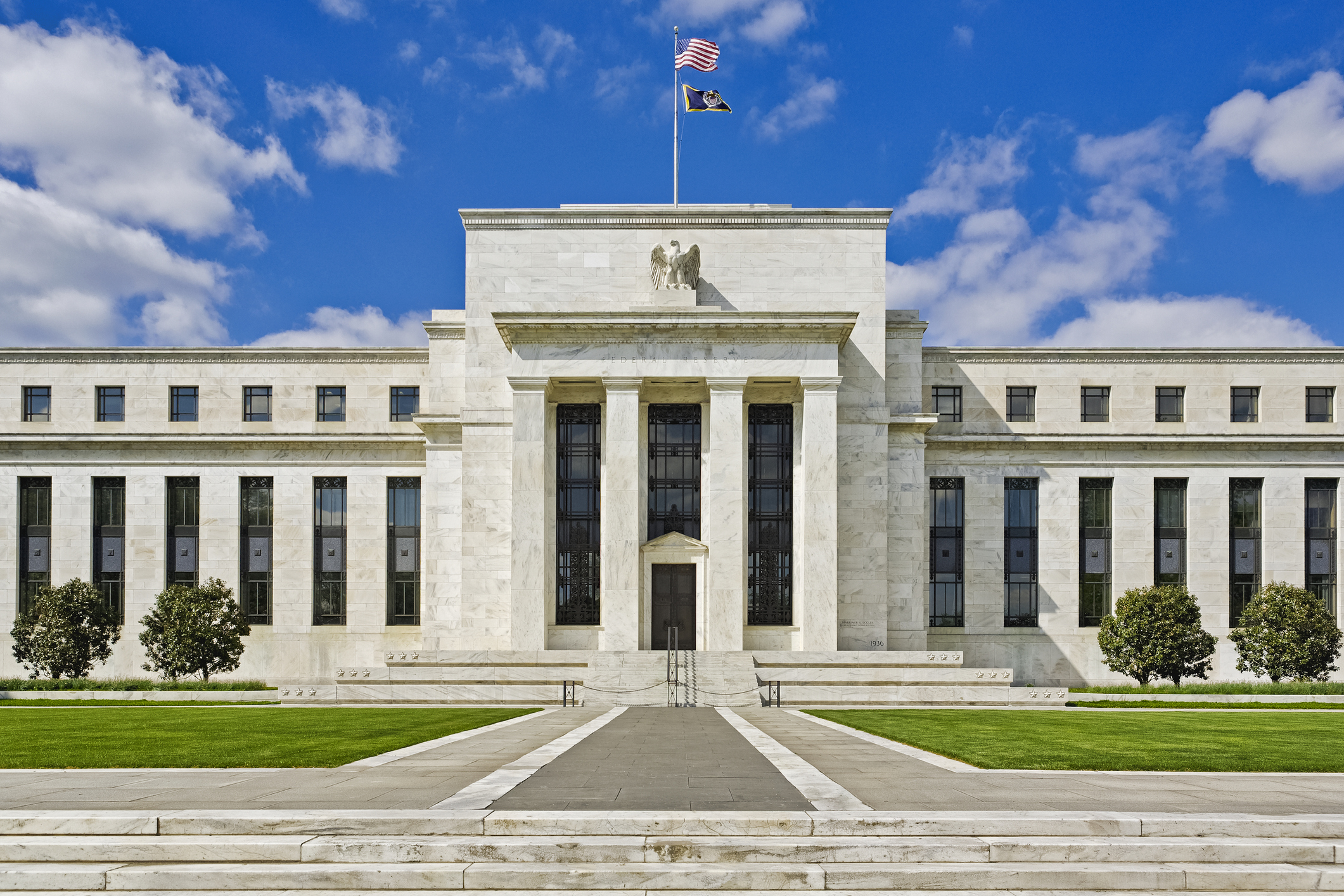
How do oil prices impact interest rates?
Oil prices have risen in recent days as tensions escalate in the Middle East – but what have oil prices got to do with interest rates?
Higher oil prices means higher energy prices, and energy underpins the cost of pretty much everything. Bank of England estimates cited by Deutsche Bank suggest a 10% increase in oil prices leads to a 0.2-0.3 percentage-point increase in CPI inflation.
“In a ‘normal’ world, monetary policy would likely see very little reaction to a shift in energy prices. Why? The lags in monetary policy make it a less-optimal tool in dealing with any near-term inflation increase,” said Sanjay Raja, Deutsche Bank’s chief UK economist.
“But we may not be in a ‘normal’ world. Inflation expectations, while receding, remain elevated.”
Raja points out that inflation is still significantly above the Bank of England’s 2% target, with ongoing fears about “second-round effects”. It could push some MPC members to take a more guarded view when it comes to the pace of future rate cuts, in his view.
For now, Deutsche Bank still expects three more rate cuts this year, but economists will be watching the situation closely.

Can we expect further tariff turmoil next month?
Donald Trump’s “Liberation Day” tariffs unleashed chaos in markets at the start of April, before the president backpedalled on the most extreme measures, announcing a 90-day pause. Those 90 days will soon be up.
Trump has previously threatened to reimpose the tariffs on 9 July if countries do not come to an agreement with him. Will he do it?
The UK and US recently announced a trade deal outlining preferential terms on exports like cars and aerospace products, but the UK is currently the only trading partner with an agreement.
The president is famously unpredictable. If he sticks to his original position and imposes higher tariffs on other nations next month, we could see further market turmoil amid fears of a global economic slowdown.
“At the moment it feels like geopolitical tension is breeding,” said Danni Hewson, head of financial analysis at AJ Bell. “While everyone may be clamouring for some jam now in the form of interest rate cuts, central banks must take a more emotionally detached view on the longer-term path of the economy and inflation.”
That concludes our preview analysis for today, but we will be back with more live coverage in the lead-up to the Bank of England’s midday announcement tomorrow. Join us then.
Good morning and welcome back to our live report. The Bank of England will announce its interest rate decision at midday. To recap, here is what is expected:
- The Monetary Policy Committee (MPC) is expected to hold rates at their current level: 4.25%.
- Inflation remained high at 3.4% in May’s report, published yesterday, and geopolitical risks are ramping up again. Against this backdrop, the Bank is likely to take a wait-and-see approach.
- Most economists are expecting at least one more rate cut later this year as the economy slows. GDP slumped by 0.3% in April as higher business taxes and Donald Trump’s tariffs took their toll. Wage growth is still high but is showing signs of slowing. Likewise, unemployment remains low but is starting to pick up.
- Deutsche Bank thinks the MPC will “open the door to an August rate cut” in its meeting minutes and summary today.
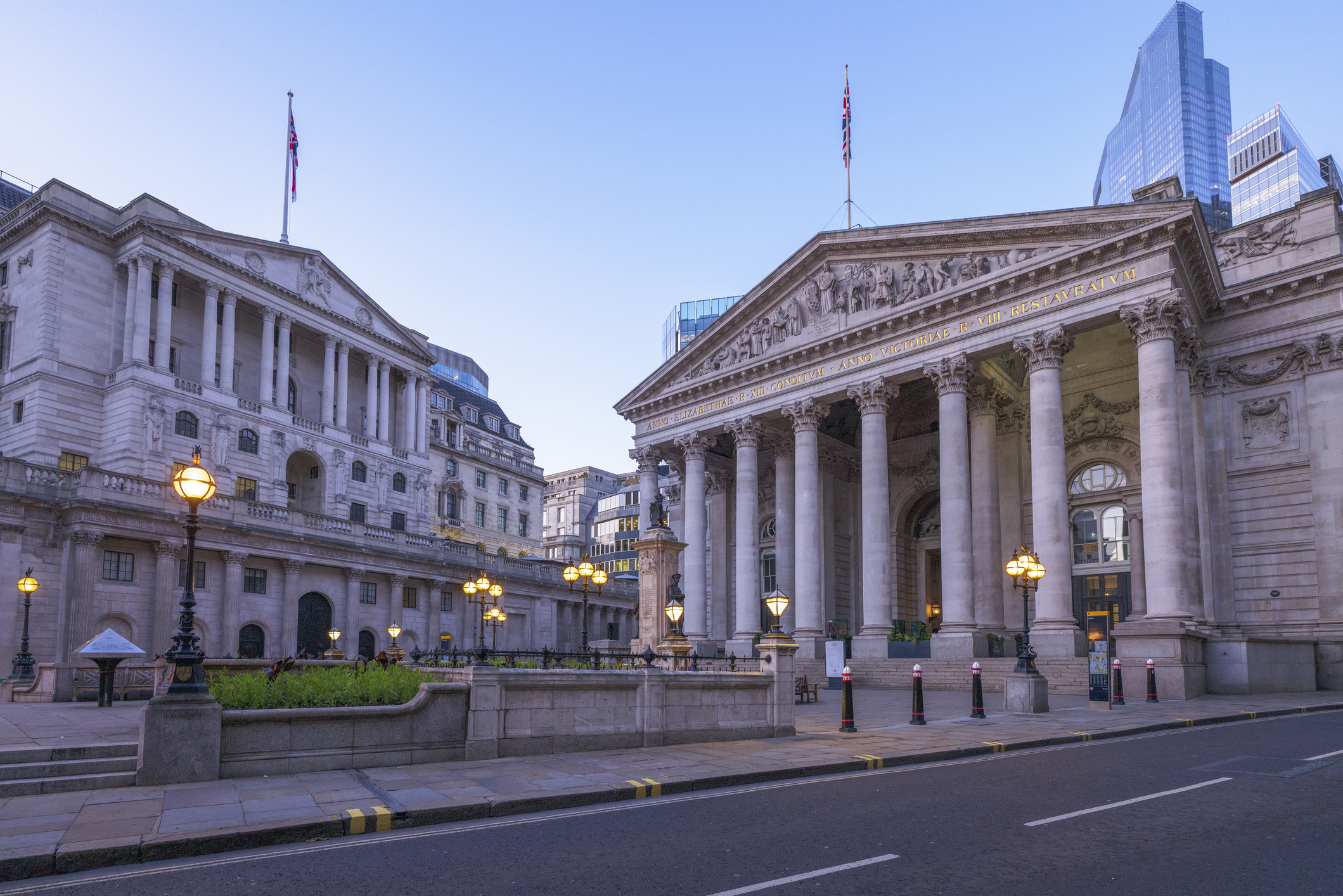
Fed decides to hold – despite pressure from Trump
The US Federal Reserve (Fed) held rates for the fourth time at its meeting yesterday, despite pressure from Donald Trump to lower them. Fed chairman Jerome Powell said tariffs were “likely to push up prices and weigh on economic activity”. He added that it was not yet clear whether tariffs would have a short-term impact on inflation, or whether it would prove more persistent. As a result, the Fed is taking a wait-and-see approach.
“For the time being, we are well positioned to wait to learn more about the likely course of the economy before considering any adjustments to our policy stance,” Powell said.
The Bank of England is expected to follow suit today, also holding rates at their current level.
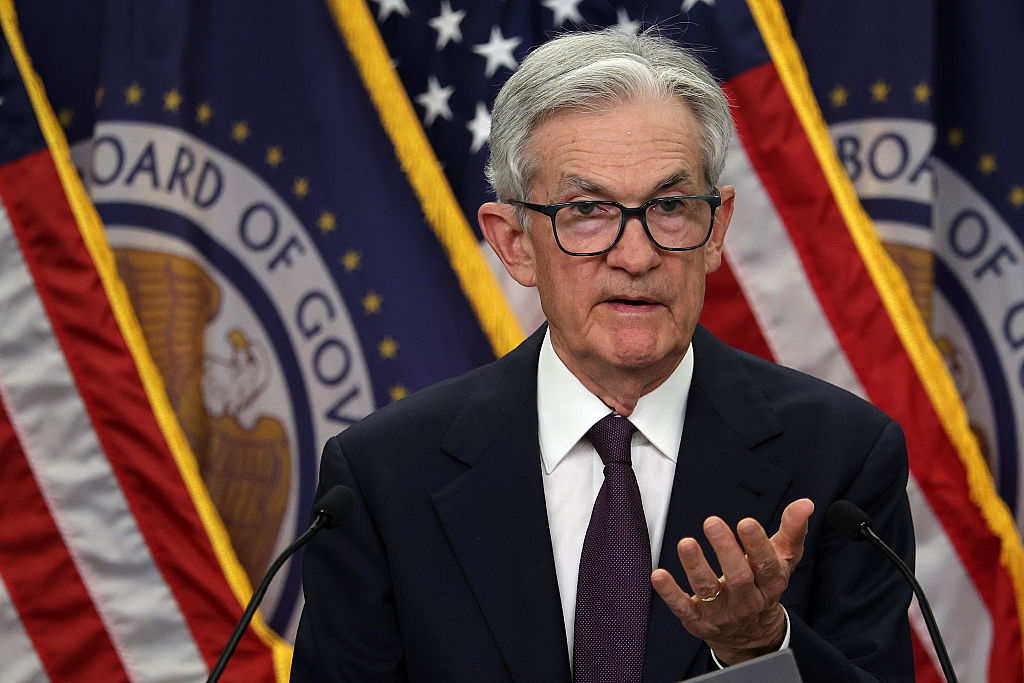
Markets likely to be nonplussed by BoE decision
The FTSE 100 opened around 0.4% lower this morning, but it has little to do with the upcoming Bank of England decision. A hold is widely anticipated and has long been priced in. Investors’ minds are elsewhere.
“Markets have plenty of other things to focus on, namely the Middle East conflict which shows no sign of easing. Equity markets were in the red across Europe and most of Asia as investors were spooked by the escalating conflict and the negative read-across to inflation,” said Russ Mould, investment director at AJ Bell.

“Sticky inflation” could impact mortgage rates
While a hold decision is expected today, most economists think we will see at least one more base rate cut before the year is out. Mortgage rates have come down significantly over the past year or so, but sticky inflation could create some volatility and slow the pace of further drops.
“Sticky inflation and current global pressures can result in a more cautious approach to rate setting, and such uncertainty can impact swap rates,” explains Rachel Springall, finance expert at comparison site Moneyfacts. Swap rates are the financial instruments which underpin mortgage pricing.
Those borrowers who took out a relatively cheap five-year fixed mortgage before interest rates started rising in 2021 will be due to remortgage soon and may be hoping for further base rate cuts before they fix.
But remember: whatever happens with the Bank of England, it could be worth shopping around several months before your current deal expires. Lenders often allow you to lock in a new deal up to six months in advance. Often, you then have the flexibility to ditch the deal before it starts, if a better rate appears in the meantime – although make sure you read the small print, as you might lose any fees you paid.
Interest rate decision due at midday
There are less than 10 minutes to go until the Bank of England announces its interest rate decision. To recap: rates are expected to be held at 4.25%. Stick with us. We’ll bring you the news as it breaks before delving into some analysis. We’ll also dig into the summary documents published by the Bank to give you a flavour of what was discussed, how each member of the committee voted, and where rates might be heading over the rest of 2025.
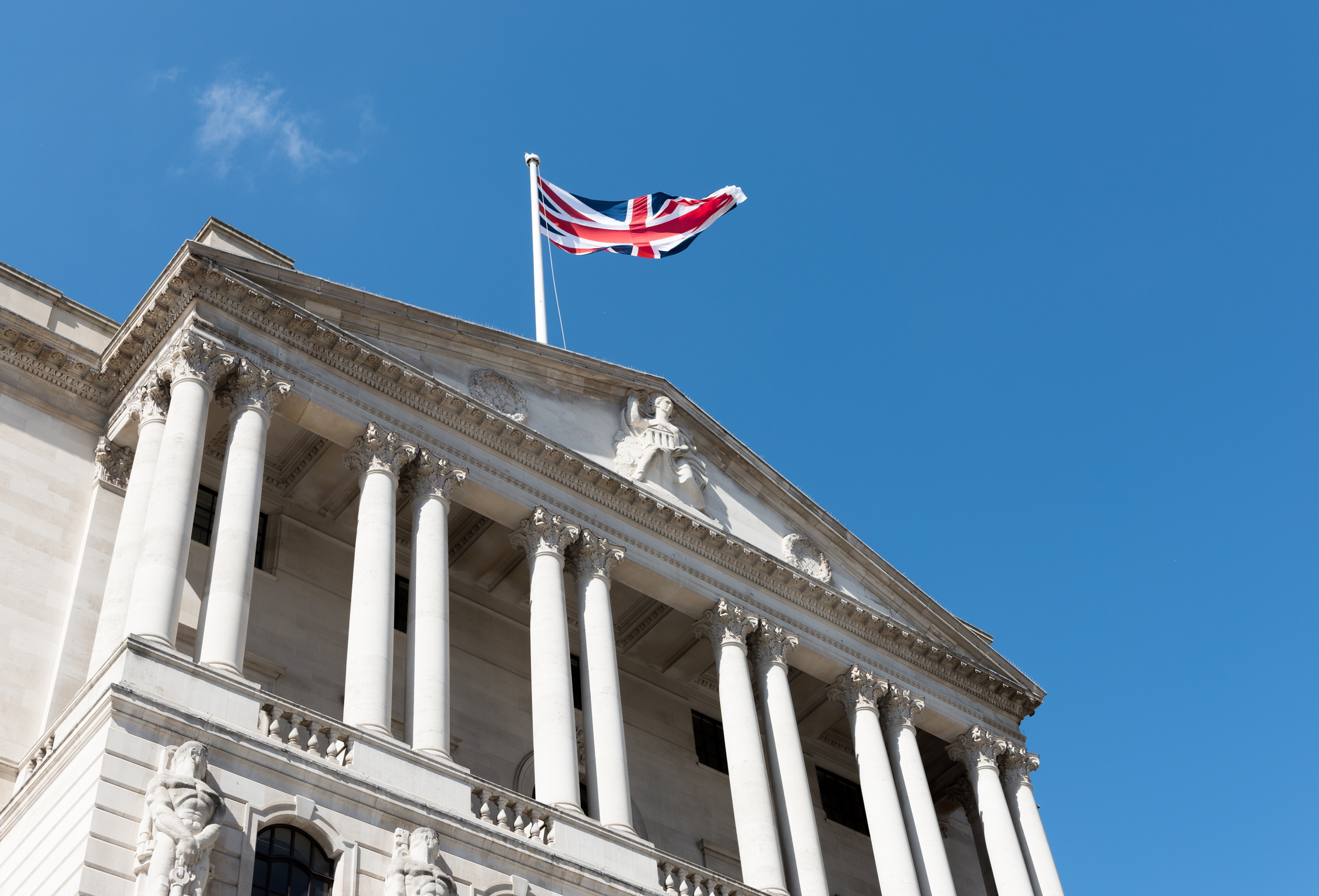
BREAKING: Bank of England holds rates
Interest rates have been held at 4.25%, as expected.
It comes after inflation remained high at 3.4% in May’s report, published yesterday.
The Monetary Policy Committee is still divided
Six members of the Monetary Policy Committee voted to hold rates. Three members (Swati Dhingra, Dave Ramsden and Alan Taylor) voted to cut the base rate to 4%.
This echoes what we have seen in previous meetings – a divided MPC.
Research provider Pantheon Macroeconomics had forecast a 7-2 split rather than the 6-3 vote that actually materialised. Its economists were not expecting Dave Ramsden to vote for a rate reduction.
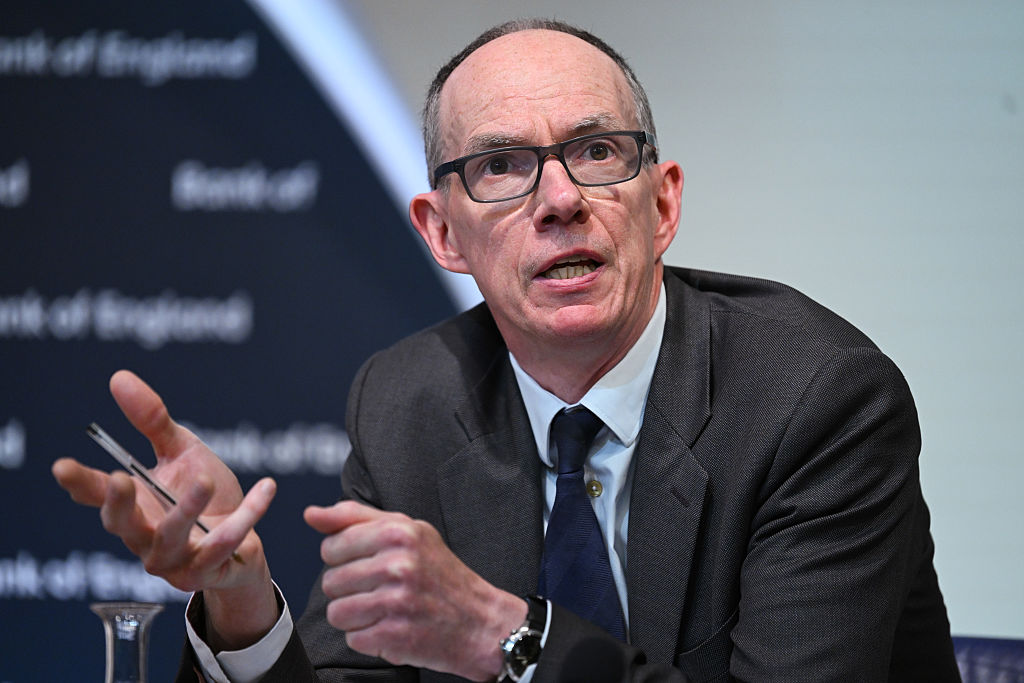
"Gradual and careful" message remains
In recent meetings, the Bank of England has repeatedly said that it plans to take a "gradual and careful" approach to interest rate cuts. This phrase appeared in the summary documents and meeting minutes again today.
Some have interpreted this as meaning quarterly cuts, which is the pattern we have seen so far. However, the Bank has been clear that monetary policy is on no "pre-set path".
MPC took note of weaker labour market conditions
Since the last Monetary Policy Committee (MPC) meeting, we have seen evidence of some weakening in the labour market. Wage growth is still high, but has been slowing. Unemployment is still low, but has been rising.
The Bank of England needs the labour market to slow down in order to deliver further interest rate cuts. Part of the reason for this is that wage growth is a big driver of inflation.
The MPC noted these developments. Seemingly, they contributed to the decision of three members to vote for a cut. Private sector regular wage growth is one area that was flagged. This came in lower than expected in the latest report. The Bank also said that incoming pay settlements were in line with its expectations, and were "approaching sustainable rates".

"Global uncertainty remains elevated"
The Bank of England acknowledged that geopolitical risks have risen as a result of the conflict between Israel and Iran. This could have ramifications for inflation and monetary policy, particularly given the spike in oil prices.
"The committee will remain sensitive to heightened unpredictability in the economic and geopolitical environment, and will continue to update its assessment of risks to the economy," the Bank said.
Impact of Trump's tariffs is "evident"
The Monetary Policy Committee (MPC) said the impact of Donald Trump's tariffs had been "evident" in the data it observed during this month's meeting.
It saw evidence of front-loading in the first quarter of the year, as some importers in the US tried to get ahead of the tariffs, stockpiling goods in advance. It expects this to unwind in the second quarter data, after the tariffs kicked in.
Separate data published by the Office for National Statistics shows the UK economy slumped by 0.3% in April, as trade tariffs and higher domestic business taxes kicked in. We should get a better sense of the longer-term trend over the months to come, as more data is published.
That said, the Bank acknowledged that the worst tariff measures announced in April have now been dialled back. The reduction in tariffs with China has reduced the average US tariff rate by just over a third, in the MPC's view.
In its latest survey of UK chief financial offers (CFOs), the bank also found that most companies were "not expecting tariffs to have a material impact on their sales and investment". CFOs also said they felt uncertainty around US tariffs had fallen between the months of April and May.

"The surprise? A third dissenter"
In the words of Sanjay Raja, Deutsche Bank's chief UK economist, today's decision was "never really about a rate change". Bank of England watchers ruled that possibility out long ago.
What economists were really looking out for was signs of any future guidance. And the 6-3 voting split could give a clue.
One of the biggest surprises today was Dave Ramsden's decision to vote for a cut. Unlike Swati Dhingra and Alan Taylor, whose votes were widely anticipated, commentators were not expecting Ramsden to turn dovish.
"Clearly, Ramsden is putting more weight on recent labour market dynamics," Raja said.
Remember that wage growth slowed and unemployment ticked up in the latest labour market report. The number of job vacancies also dropped by 63,000 over the quarter (February-April), and ONS survey data showed that some firms are not recruiting new workers or replacing those who have left.
In other words, the economy is showing signs of cooling.
"It's not all dovish"
Dave Ramsden might have unexpectedly voted for a cut, but economists have warned against interpreting this as a major shift in tone among the Monetary Policy Committee.
"It's not all dovish," said Sanjay Raja, Deutsche Bank's chief UK economist. "There was still a nod to supply side constraints (i.e. weaker productivity, the trade war, and so on)."
"The MPC also explicitly stated that it would remain 'vigilant' about recent geopolitical news on energy and what this would mean for inflation expectations," he added.
"The rise in food prices has also caught the attention of the majority of the MPC."
What does today's decision mean for your personal finances?
Let's now turn our attention to the pound in your pocket. What does the Bank of England's decision mean for your personal finances? Stick with us as we share our analysis over the next few posts.
Annuity rates remain attractive
We shared some analysis on savings and mortgages yesterday (scroll for previous blog posts), so let's start with annuities today.
Those who aren't familiar with this sort of retirement product can check out our annuities guide, but it's essentially a contract you buy from an insurer which gives you a guaranteed income in retirement. You can use some or all of your pension savings to purchase it.
For many years after the global financial crisis, annuities were out of fashion as the rates they offered were poor, but a higher interest rate environment has brought them back into vogue.
"Today’s interest rate hold will contribute to a sustained period of success in the annuity market, said Helen Morrissey, head of retirement analysis at Hargreaves Lansdown. "The latest data from our annuity search engine shows a 65-year-old with a £100,000 pension can now get up to £7,900 per year from a single-life level annuity with a five-year guarantee."
"After a period in the doldrums, the market has roared back to life off the back of interest rate increases and soaring gilt yields. While incomes haven’t continued to rise at the rate they did a couple of years ago, the market is delivering real value for retirees on the hunt for a guaranteed income," she added.
If you are thinking about buying an annuity, make sure you shop around to secure the best rates on the market. Recent analysis suggests the cost of not shopping around can come to a whopping £8,000 over a period of 20 years – a large amount of money for a small amount of research.
Also bear in mind that purchasing an annuity is an irreversible decision, so it is usually worth seeking financial advice or guidance before making a decision. The free government-backed service Pension Wise is a good place to start as you approach retirement.

1.6 million mortgages due to expire in 2025
Around 1.6 million households will see their fixed-rate mortgage deal come to an end this year, according to trade association UK Finance. Those coming off a relatively cheap deal agreed before rates started rising in 2021 could see their monthly repayments jump significantly. They will be hoping that further base rate cuts materialise – and sooner rather than later.
"For existing borrowers rolling off cheap five and 10-year fixed-rate deals, the financial hit from higher mortgage costs will hurt," said Alice Haine, personal finance analyst at investment platform Bestinvest. "This is where a reputable independent mortgage broker can be worth their weight in gold, helping to source the right solution for a borrower’s unique needs."
Choosing how long to fix your mortgage for is one consideration.
Haine points out that the gap between the average two and five-year fixed rate deals has now narrowed to the lowest level since October 2022 (when the inversion began and longer fixed terms became more expensive).
This means a five-year fix is now only slightly more expensive than a two-year fix – a consequence of rates coming down and markets pricing in further interest rate cuts over the months to come.
There are several considerations to weigh up. A five-year deal gives you certainty for longer, but you also take on the risk that rates fall further over the lifetime of the product. If this happens, then a two-year deal could end up saving you money over the long run, as you will be able to remortgage sooner when rates are lower.
"However painful an increase, those looking to refinance should not delay locking in a fresh deal, otherwise they risk reverting to their lender’s standard variable rate (SVR). The average SVR may have dropped from its peak of 8.19% (end of 2023), but it remains high at 7.48%," said Haine.
Poll: tell us your thoughts
Do you want interest rates to fall more quickly? Perhaps you are a prospective homeowner looking to take out a first mortgage, or an existing owner looking to refinance? Or, do you want rates to remain at their current level? Perhaps you have significant savings and are enjoying higher returns. Share your thoughts in our poll.
Shop around for an inflation-busting savings account
Savings rates have been falling and, even though the Bank of England voted to hold rates today, the top savings deals will probably continue to disappear over the coming months. This is because further interest rate cuts are on the horizon. Most economists expect at least one more this year.
The average easy-access savings rate is now 2.67%, which is lower than inflation (3.4%). If you are earning a rate this low, your savings are being eroded. Shop around for an inflation-busting rate. The top accounts currently offer up to 5% AER – although make sure to read the terms and conditions carefully, as some of the most attractive-looking deals include a temporary bonus rate.
Today’s pause also offers a good opportunity for savers to lock in higher rates while they stick around. If you have a pot of cash that you are happy to put away for a year or so, consider opening a fixed-rate account. That way, you will be protected against future rate cuts.

What is stagflation – and are we heading for it?
With inflation still high, interest rates restrictive, and growth slowing, some have raised questions about whether the UK economy is heading for stagflation. Tensions in the Middle East, rising energy prices, and the potential for a tariff-related economic slowdown have all heightened these fears.
That said, there is no reason to panic. The Bank of England has been clear that it thinks the inflation resurgence will be short-lived. It expects it to peak at around 3.7% in September before falling back. Although growth has been slowing, and dipped into negative territory in April, the economy has also proved fairly resilient so far.
The OECD think-tank has forecast a growth rate of 1.3% for the UK in 2025 and 1% in 2026 – far from awe inspiring but also fairly consistent with what we have seen in recent years. The economy grew by 1.1% in 2024, for example.
Thank you for joining us – and upcoming MPC dates
That concludes our live coverage on interest rates. Thank you for joining us. Before we go, some dates for your diary.
There are four more Monetary Policy Committee (MPC) meetings before the end of the year. These will take place on the following dates:
- 7 August
- 18 September
- 6 November
- 18 December
Economists are divided on how many more rate cuts we will see over the course of these meetings.
Research provider Pantheon Macroeconomics is expecting just one more, potentially coming in August. Financial institution ING thinks we will see two more, coming in August and November.
Deutsche Bank is more bullish in its outlook – making it a bit of an outlier – and thinks there could be three, with the pace of policy easing picking up later in the year if pay growth continues to slow.

